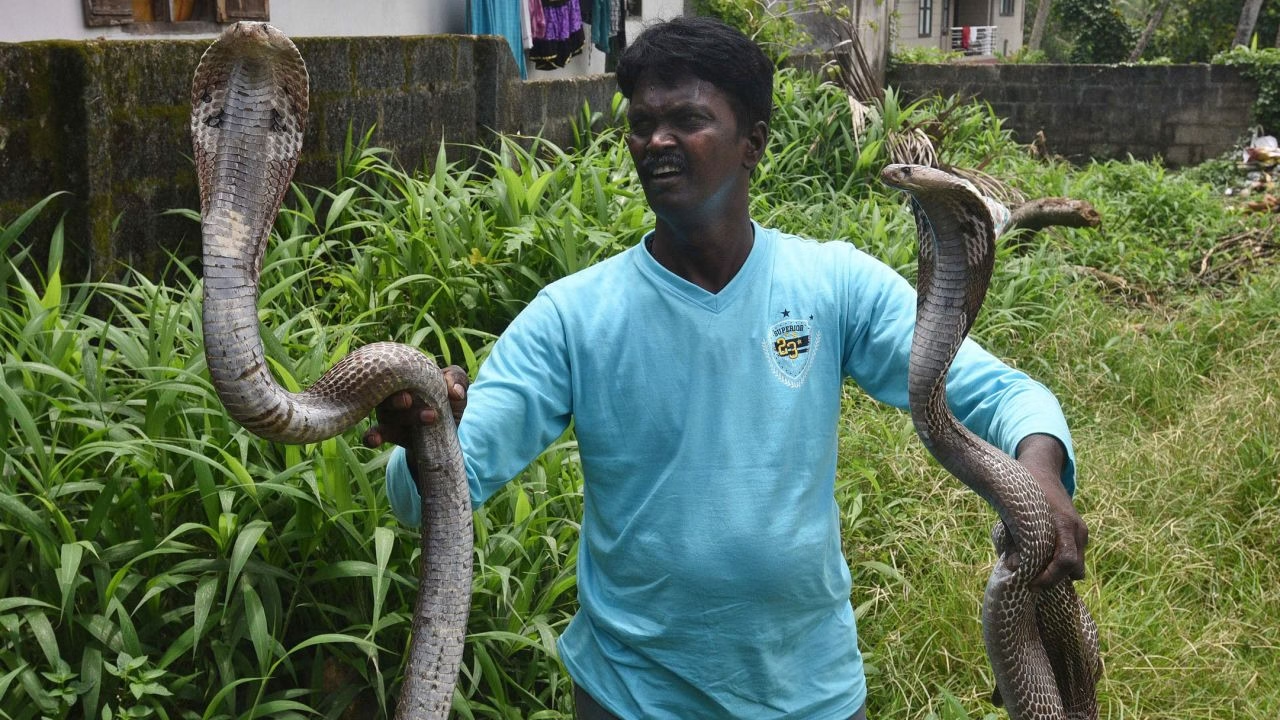India is home to over 300 snake species, with more than 50 venomous types slithering across its rural and urban terrain. Yet, amid rising concern over snakebite fatalities and the government’s expanding public health agenda, one group remains especially at risk: snake rescuers. As social media shines a spotlight on snake-catching feats, a less glamorous truth remains hidden. These handlers often operate without training, protection, or regulation, risking their lives in the very act of saving others from danger.
The numbers are unforgiving. India reports between 1.1 and 1.8 million snakebites each year, leading to roughly 58,000 deaths annually, nearly half of all global snakebite deaths. Of those fatalities, a significant and growing number involve rescuers or handlers, often bitten during misguided attempts at capture. These incidents reflect a broader pattern of risk: poorly equipped volunteers, social media influencers chasing likes, and traditional rescuers lacking access to modern protective gear.
The stakes are high, especially when handlers confront the “Big Four” venomous snakes: the Indian cobra, common krait, Russell’s viper, and saw-scaled viper.

These species account for a vast majority of fatalities, each with unique venom properties. The cobra and krait unleash neurotoxins that paralyze the victim; the vipers, in contrast, induce widespread internal bleeding and organ failure. The speed and stealth of these snakes, especially the nocturnal krait, leave little margin for error. Yet, amateur rescuers continue to approach them barehanded, emboldened by viral videos and community acclaim.
The growing visibility of snake rescuers on platforms like X and Instagram has complicated the problem. In one recent incident, a rescuer in Bihar was bitten on camera while trying to handle a cobra with his hands—an event that received over 2 million views. While such videos may boost follower counts, they often promote dangerous myths: that bravery supersedes training, and that familiarity guarantees safety.
But the crisis goes far beyond rescuers. The broader snakebite epidemic remains a pressing, and largely preventable, public health disaster. Rural areas are hit hardest. Agricultural workers, often barefoot or minimally clothed, are particularly vulnerable. Children under 15 and adults between 30 and 69 make up the bulk of fatalities. Most bites occur during the monsoon season when snakes seek dry ground, entering homes, fields, and schools. In eight states, Bihar, Jharkhand, Madhya Pradesh, Odisha, Uttar Pradesh, Andhra Pradesh, Rajasthan, and Gujarat, deaths from snakebites account for nearly 70% of the national toll.
A major cause of this crisis is systemic neglect. Public health centers in remote districts often lack antivenom stocks or critical care units. Victims must travel for hours to reach hospitals that are often unprepared. Traditional remedies, like snake stones or chanting rituals, delay proper treatment. Many deaths occur not because of venom potency but because the window for life-saving care passes without intervention.
Antivenoms, when available, present their own problems. India primarily uses a polyvalent antivenom targeting the Big Four, yet this solution is inadequate for the country’s full range of venomous snakes. The growing prevalence of non-Big Four species, like the hump-nosed pit viper or green pit viper—has highlighted the need for region-specific monovalent antivenoms. High doses of current polyvalent versions lead to severe side effects and inflated costs.

To address these shortcomings, the government launched the National Action Plan for Snakebite Envenoming (NAPSE) in March 2024, aiming to halve snakebite deaths by 2030. The plan prioritizes training for medical staff, increasing antivenom production, and running awareness campaigns. Karnataka, in a first, declared snakebites a notifiable disease in 2024, improving data tracking and policy response. Parallel efforts by the Indian Council of Medical Research are underway to survey the true scale of the crisis across 14 states.
Innovation offers some hope. Scientists at the Indian Institute of Science have developed synthetic antibodies targeting cobra neurotoxins, potentially replacing or augmenting current antivenoms. Meanwhile, Tamil Nadu’s Irula Cooperative continues to harvest venom safely and ethically for antivenom production, offering a rare example of how traditional expertise can support modern medicine.
Despite these strides, snake rescuers remain poorly protected. There is no national registry of licensed handlers. Many operate without gloves, boots, or snake tongs. Unlike wildlife rangers or disaster responders, they receive no government stipends or training. As the monsoon intensifies across north and central India, calls for rescues are rising. So too is the silent cost: injured handlers, dead rescuers, and grieving families.
The way forward lies not only in more antivenom or better rural hospitals, but in elevating the status of snake handlers from amateur thrill-seekers to trained responders. Licensing, mandatory certification, and regional training centers could reduce the toll. Public campaigns should discourage dangerous stunts and highlight safe rescue techniques.
India is taking steps in the right direction. But until snake rescuers receive the same protection and recognition as other first responders, the country’s snakebite epidemic will continue to claim lives not just among the unaware, but also among those who dared to help.


Leave a Reply